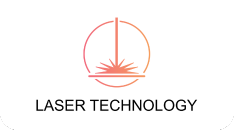Which materials can be joined with laser welding?
Laser welding is an extremely versatile welding method that can bond a wide range of materials together. In addition to metals such as steel, aluminum and copper, other materials can also be successfully connected using the laser welding process.
In addition to steel, aluminum and copper, the metals that are often joined with laser welding also include titanium, stainless steel alloys, nickel alloys and other metals. These materials are used in various industries, from automotive and aerospace to electronics and medical technology.
In addition, laser welding can also be used to join non-metals such as plastics, ceramics and composites. Laser welding is used, particularly in electronics and micromanufacturing, to connect fine parts and components made of different materials.
The versatility of laser welding allows it to successfully weld a wide range of material combinations, making this welding method an attractive option for a variety of applications. The precise selection of welding parameters and the adaptation of the welding process to the specific properties of the materials to be joined are crucial for achieving high-quality welded connections.
Which materials can be joined with laser welding?
Laser welding is an extremely versatile welding method that can bond a wide range of materials together. In addition to metals such as steel, aluminum and copper, other materials can also be successfully connected using the laser welding process.
In addition to steel, aluminum and copper, the metals that are often joined with laser welding also include titanium, stainless steel alloys, nickel alloys and other metals. These materials are used in various industries, from automotive and aerospace to electronics and medical technology.
In addition, laser welding can also be used to join non-metals such as plastics, ceramics and composites. Laser welding is used, particularly in electronics and micromanufacturing, to connect fine parts and components made of different materials.
The versatility of laser welding allows it to successfully weld a wide range of material combinations, making this welding method an attractive option for a variety of applications. The precise selection of welding parameters and the adaptation of the welding process to the specific properties of the materials to be joined are crucial for achieving high-quality welded connections.
